County Clare’s “High Towers and High Powers”
From Castles to Kings
Explore County Clare’s captivating history, where towering structures and influential forces shaped the course of time. Immerse yourself in a curated selection of sites that embody the essence of the county’s rich heritage and powerful legacies.Visit Bunratty Castle
Ireland’s most famous fortress
Bunratty, South Clare
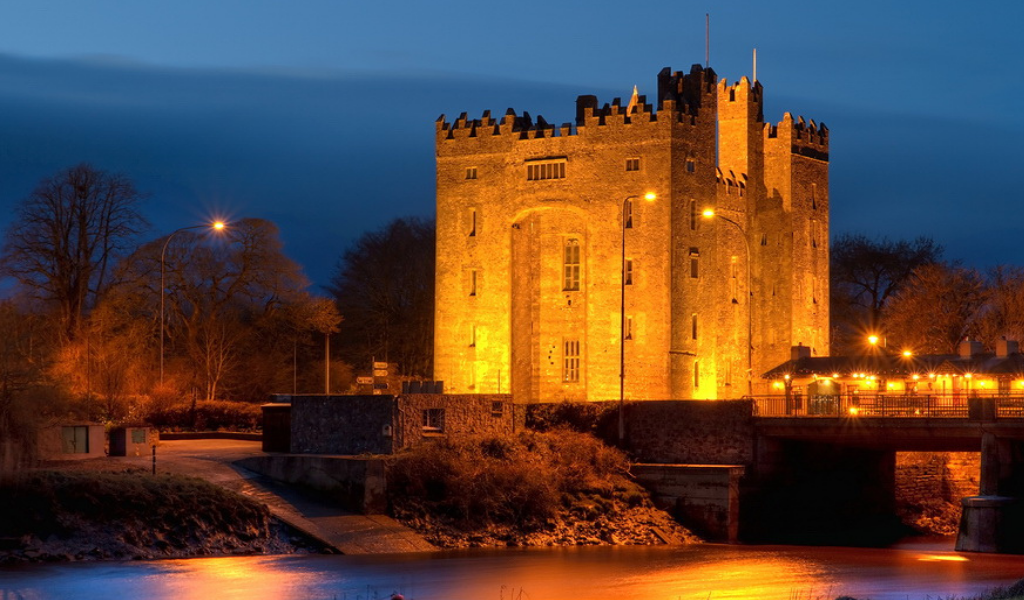
Immerse yourself in the captivating world of famous Bunratty Castle. Step back in time as you explore the grand halls, climb the ancient staircases, and admire the beautifully preserved furnishings. Experience the power and prestige of the noble families, including the O’Briens, who once called this castle home. The powerful MacNamara family built the present structure around 1425 but by 1475 it had became the stronghold of the O’Briens, the largest clan in North Munster. Visit by day or medieval banquets are held there nightly and offer a unique opportunity to dine like royalty, enjoy superb entertainment, and revel in the atmosphere of a bygone era.
Explore Ennis Friary
Immerse yourself in the rich history of Ennis
Ennis, County Clare
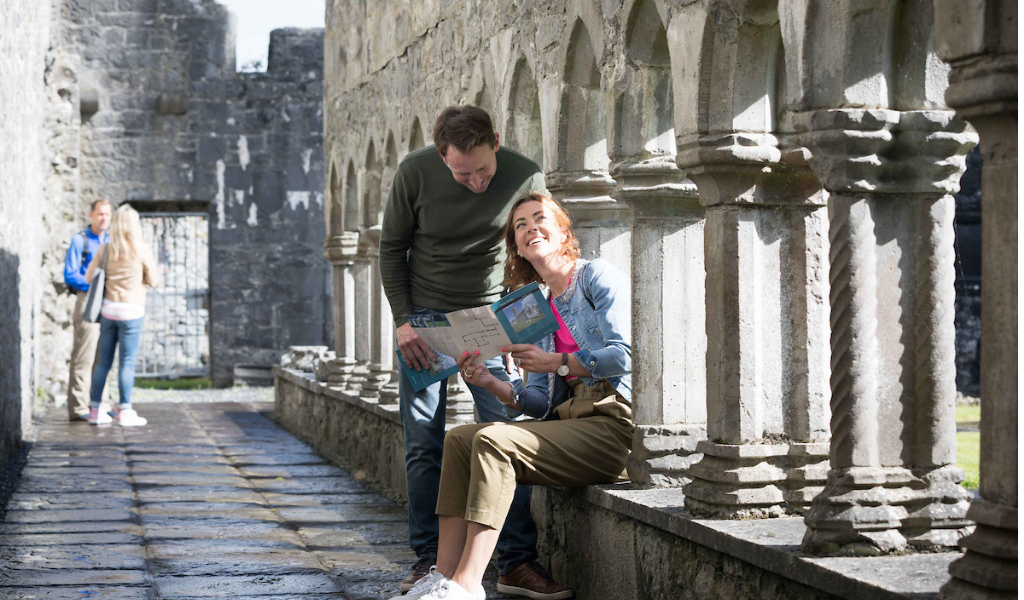
Ennis Friary, an architectural gem nestled in the heart of Ennis, holds a deep connection to the town’s foundation and rich history. Founded in the early 13th century, the friary stands as a testament to the enduring legacy of Ennis and its significant role in County Clare’s past. The establishment of Ennis Friary played a pivotal role in shaping the town’s development and identity. As a religious centre, it attracted pilgrims, scholars, and artisans, becoming a vibrant hub of activity and fostering a sense of community. Over the centuries, Ennis grew and flourished around the friary, with its presence weaving into the fabric of the town. The architectural beauty of the friary, adorned with intricate stone carvings and Gothic features, is a testament to the skilled craftsmanship of the era and a reflection of the town’s prosperity. It serves as a gateway to uncovering the captivating stories and cultural significance that make Ennis a cherished destination in County Clare.
Discover Quin Abbey’s architectural grandeur
Cloisters, towers, and timeless beauty
Quin, South Clare
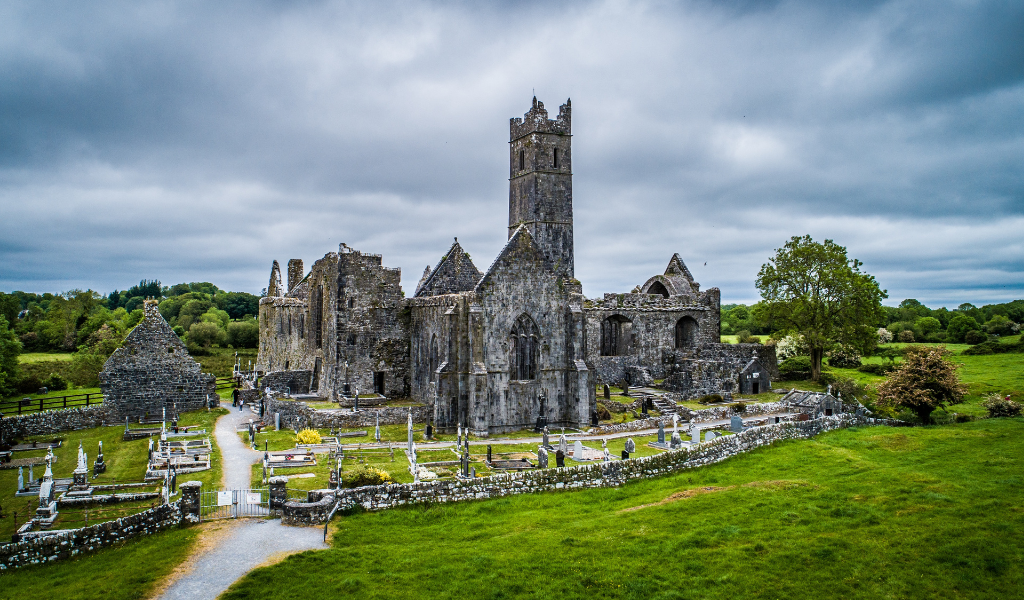
Quin Abbey exemplifies the great powers and high towers that have shaped the region’s history. Located just 10km from the vibrant town of Ennis in County Clare, Quin Abbey stands as a testament to the region’s rich history and architectural grandeur. Founded in the 14th century, this historic site was once home to Franciscan friars and continues to captivate visitors with its impressive features, notably its towering structure. The abbey’s tower offers a glimpse into the past and the abbey’s prominence is further enhanced by its remarkable cloisters, constructed in the 15th century. These intricate structures provide a unique glimpse into the architectural prowess of the time, showcasing the skilled craftsmanship and attention to detail that characterised the era. You can wander through the cloisters, immersing yourself in the spiritual ambience and imagining the lives of the monks who once walked these hallowed grounds.
Explore Craggaunowen – The Living Past Experience
Unravel the powers of the past at this historic gem
Near Quin, East Clare
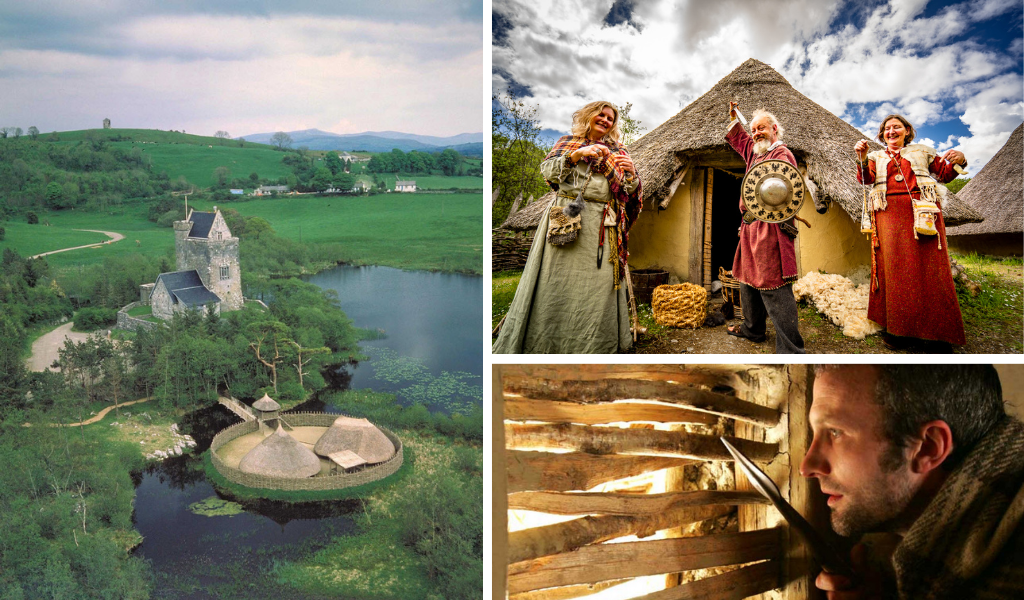
Unveil the world of “High Towers and High Powers” at Craggaunowen in Co. Clare. This remarkable site transports you to the realms of ancient Irish power and grandeur. Explore the outdoor spaces, encounter rare Irish animals, and wander along scenic trails that connect you with the land’s rich history.
Discover the captivating Craggaunowen Crannog, showcasing dwellings from the Iron Age and early Christian periods. Marvel at the ring fort, a reproduction of a farmer’s house, and be captivated by the impressive Craggaunowen Castle, a 15th-century tower house. Immerse yourself in the past as costumed animators bring history to life, sharing tales and demonstrations of ancient crafts and traditions. Discover the heights of past achievements and immerse yourself in the intriguing world of Ireland’s rich heritage.
Follow in the footsteps of Brian Boru
Ancient High King of Ireland
East Clare
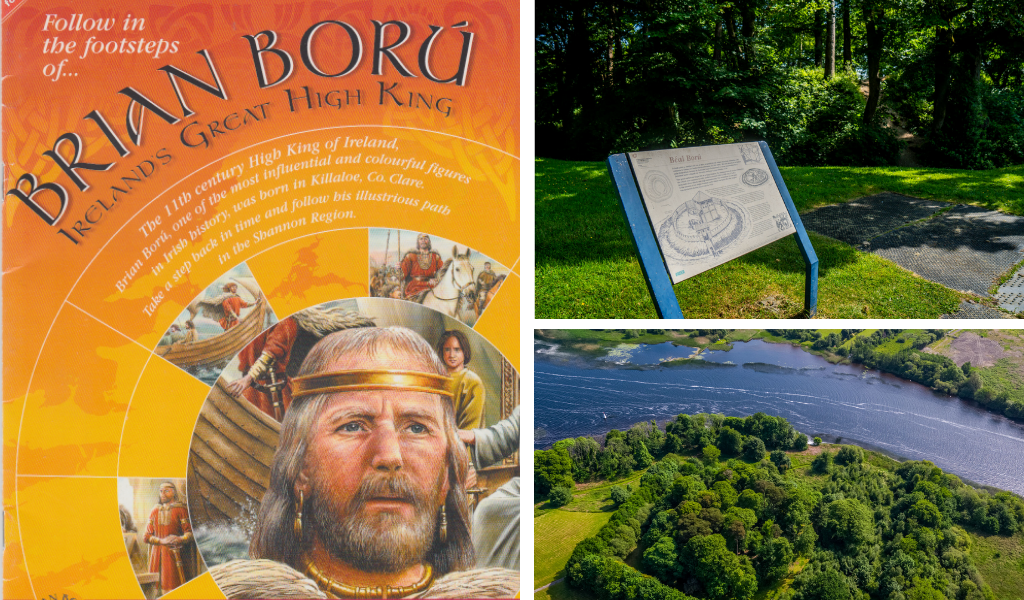
Brian Boru, a towering figure in Irish history, stands as a quintessential embodiment of high powers. Born in the early 10th century, he rose to become one of Ireland’s most influential and revered leaders. Brian Boru’s legacy is deeply intertwined with County Clare, particularly in East Clare, where you can follow in his footsteps and uncover the remarkable history that shaped his reign. As High King of Ireland, Brian Boru wielded immense authority and commanded the loyalty of his people. His visionary leadership united disparate tribes and chieftains, bringing a semblance of peace and stability to a land marred by conflict. Under his rule, Ireland experienced a period of cultural and political resurgence, cementing Brian Boru’s status as a revered figure and a symbol of Irish sovereignty.
East Clare serves as a gateway to Brian Boru’s storied past. It was in this region that he established his stronghold at Kincora, near the town of Killaloe. Today, visitors can retrace his footsteps, exploring the historic sites associated with his reign, including the site where Brian’s Fort was located just one mile north of Killaloe. Béal Ború, as it is more commonly known, stands on a spur of land which commands the point where the lake narrows into the River Shannon. From the majestic ruins of Killaloe Cathedral, to the scenic walks along the banks of the River Shannon, the region resonates with echoes of his high powers. Walk in his footsteps, absorb the history that surrounds you, and connect with the land that shaped his rise to power.
Delve into Inis Cealtra (Holy Island)
A spiritual refuge of the past
On Lough Derg, near Mountshannon, East Clare
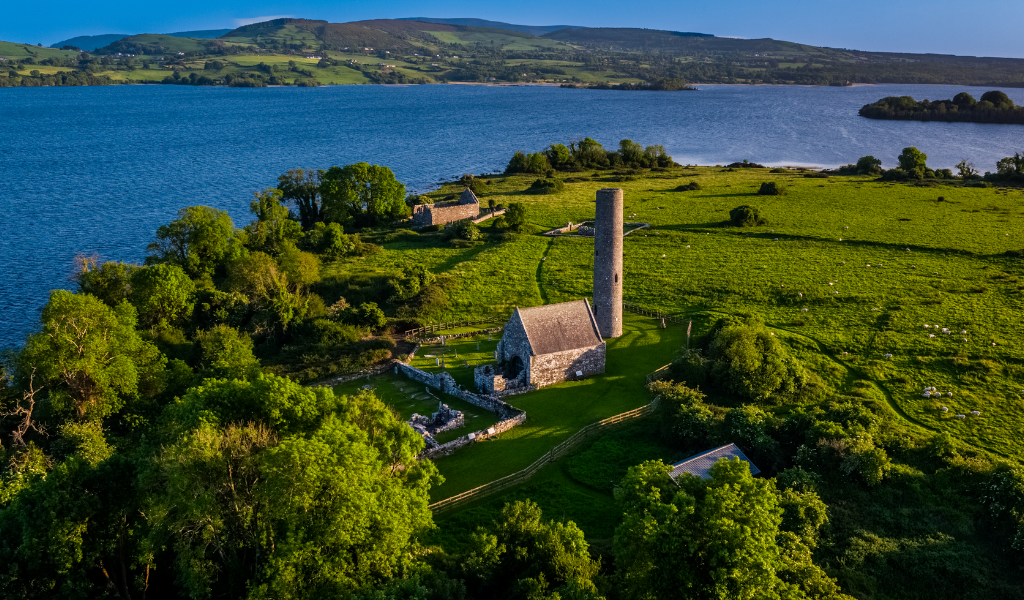
Inis Cealtra, also known as Holy Island, stands as a testament to high powers and rich history in County Clare. Situated in the scenic Lough Derg, this renowned monastic site has drawn pilgrims and visitors for centuries. With origins dating back to the sixth century, Inis Cealtra’s site holds the ruins of six churches, an early monastic cell, and a cemetery with over 80 recumbent graves. The highlight is the 80ft round tower, believed to have been built in the eleventh or twelfth century. Despite missing its conical cap, the tower’s majestic presence captivates the imagination. With its scenic beauty and captivating ruins, this island on Lough Derg offers a unique glimpse into Ireland’s rich heritage. It can be reached by boat from Mountshannon in East Clare.
Enjoy the Dysert O’Dea Archaeological Trail
Explore this revered monastic site
Near Corofin, North Clare
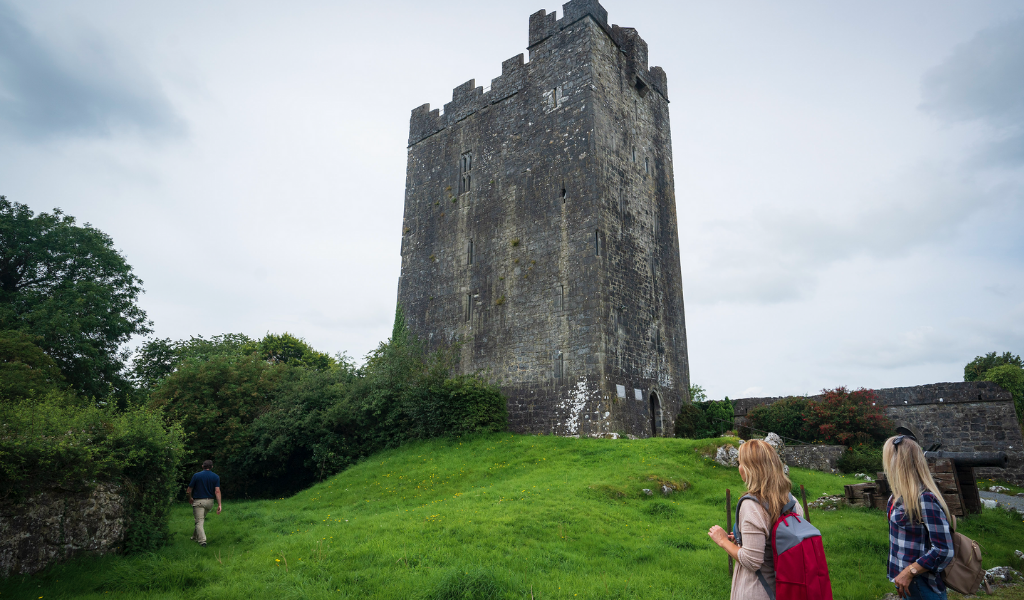
Travel to Dysert O’Dea near Corofin, where an ancient monastic site awaits, interwoven with the legacy of high towers and high powers. Amidst the peaceful ambiance, the imposing castle tower stands tall, commanding panoramic vistas of the picturesque countryside. Explore the ruins of the early Christian church and discover intricately carved stone crosses, immersing yourself in the grandeur and significance of this site.
Dysert O’Dea Monastic Site boasts an impressive collection of antiquities, with the Dysert O’Dea Round Tower being one of over 25 remarkable historical artefacts found along the Dysert O’Dea Archaeological Trail. Rising to a height of 14.6 meters, this magnificent round tower symbolises the power and influence that once graced the region.
View Carrigaholt Castle
A historic landmark reflecting the Gaelic chieftains’ rule
Carrigaholt, West Clare
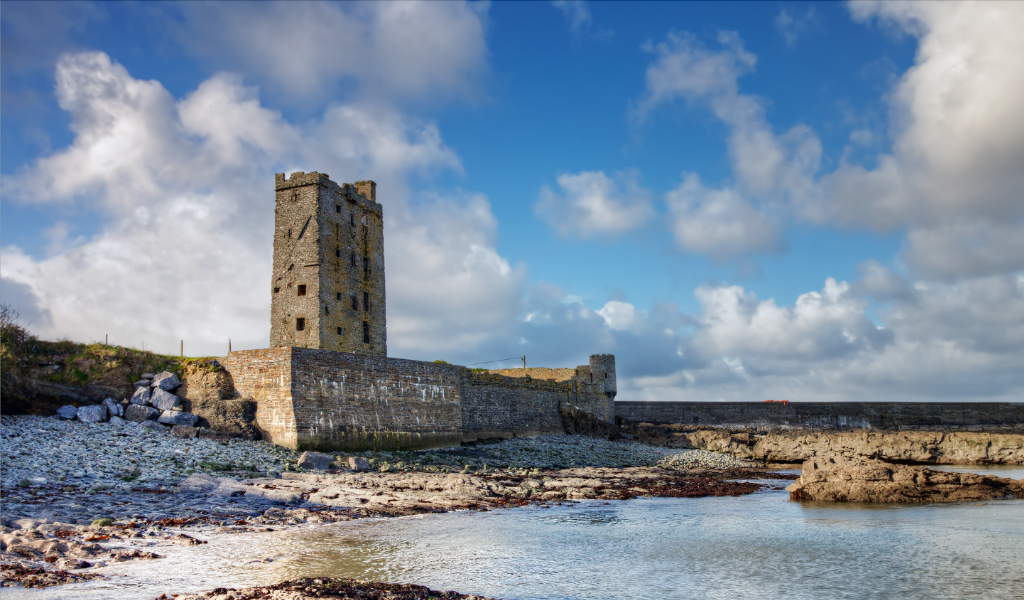
Travel to the coastal village of Carrigaholt in West Clare and immerse yourself in the captivating ruins of Carrigaholt Castle – perched on a promontory overlooking the Shannon Estuary. This prominent tower house has stood as a landmark, reflecting the region’s Gaelic chieftains’ rule and the political turbulence of the 16th and 17th centuries. Built around 1480 by the MacMahons, the castle’s architectural grandeur connects to the theme of high towers and powers. While there, take a peaceful walk and connect with Clare’s coastal beauty.
Experience Scattery Island
Explore this ancient christian settlement
Scattery Island, off Kilrush, West Clare
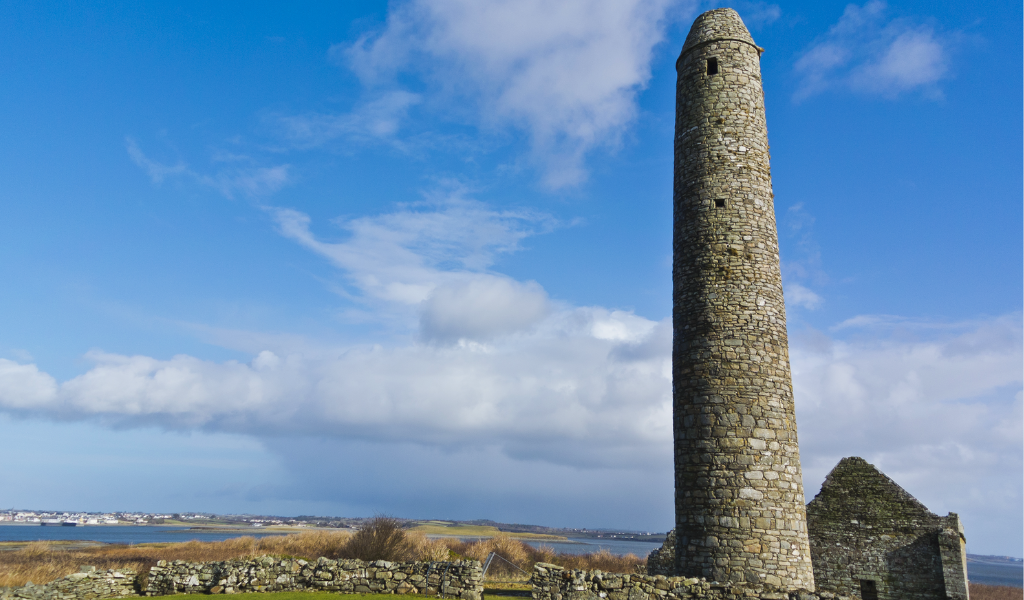
Off the northern bank of the Shannon Estuary lies Scattery Island, a site of an early Christian settlement founded by St. Senan. This remarkable man, born in the area, established his monastery in the early sixth century. Among its treasures is a round tower, one of Ireland’s tallest at 36 meters. The island is home to six ruined churches, each holding its own historical significance. It is believed that Senan himself rests beside one of the medieval churches. Throughout the centuries, Scattery Island faced numerous invasions, notably by the Vikings who sought the monastery’s rumoured wealth and returned multiple times to plunder it. Embark on a short boat trip to this captivating island, where you can explore its multi-layered, 1,500-year history.
Head for Loop Head Lighthouse
Explore Clare’s rich maritime heritage
Loop Head Peninsula, West Clare
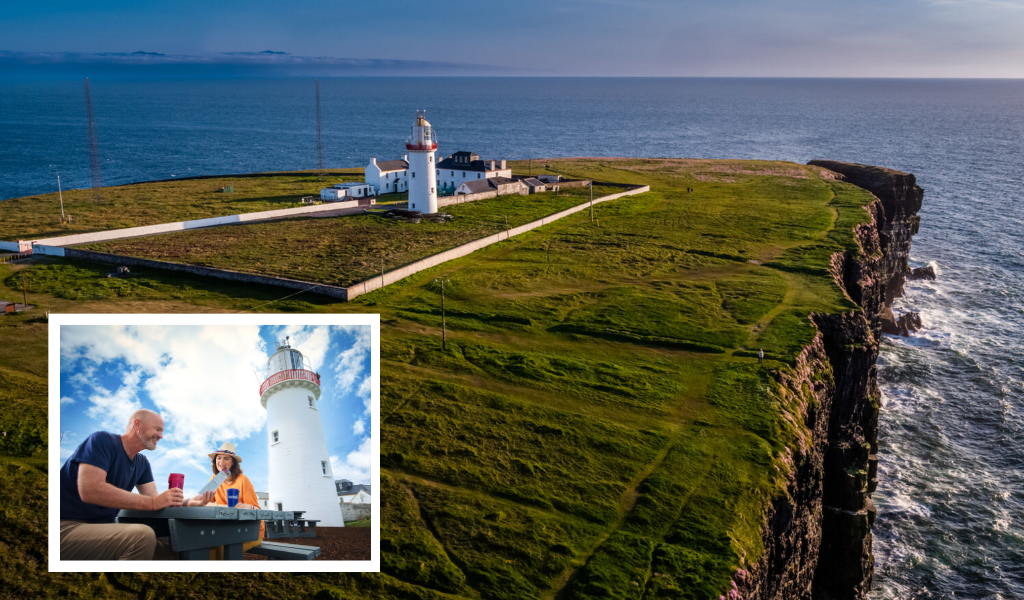
Proud, tall, beautiful, graceful, ever-watching over our beautiful part of the world. Loop Head Lighthouse is situated on the scenic Loop Head peninsula in County Clare, Ireland – the cliff-girt headland that separates the sheltered water of the Shannon Estuary from the roaring waters of the Atlantic Ocean. The lighthouse is the major landmark on the northern shore of the Shannon River, with 90 metre high views of the sea down to Kerry Head and Dingle across the Shannon and up the Clare coast, and to the Cliffs of Moher in the north. With its origins dating back to 1670, it has guided ships through treacherous waters, symbolising strength and protection. Explore the lighthouse’s rich maritime heritage, from the Lighthouse keeper’s house to the current tower designed by George Halpin in 1854. You can take a tour, with can include ascending the Lighthouse for spectacular views.
Visit Poulnabrone Dolmen
Ireland’s oldest megalithic monument
Poulnabrone, North Clare
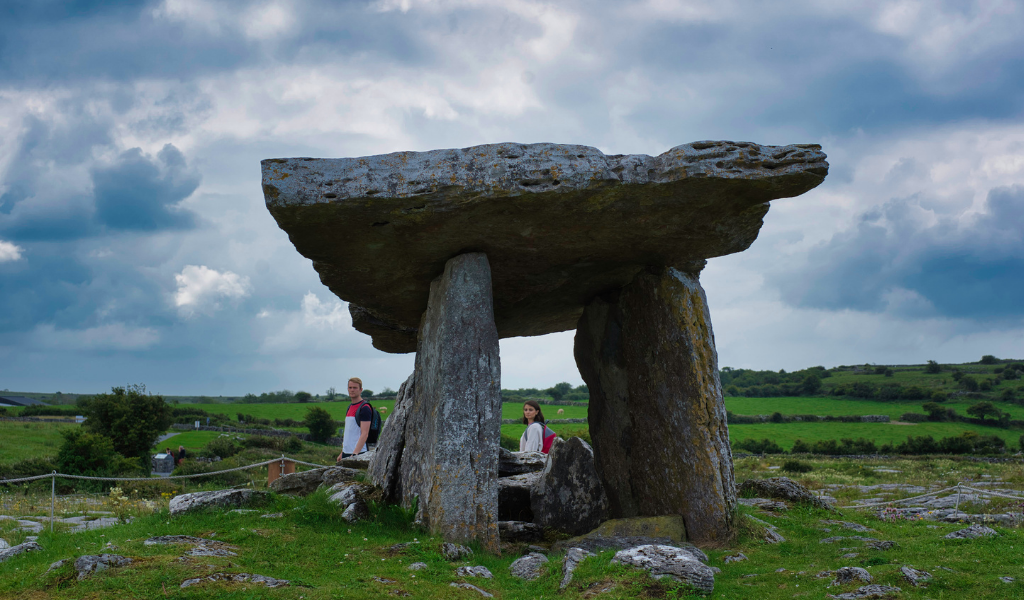
Perched amidst the captivating landscape of the Burren, Poulnabrone Dolmen stands as an enduring symbol of the high powers that once held great significance in County Clare’s ancient communities. This megalithic monument, estimated to be over 5,000 years old, mesmerises visitors with its towering limestone pillars and massive capstone. As the final resting place of individuals who were revered and influential within their community, Poulnabrone Dolmen serves as a testament to the esteemed roles they held and the power they wielded. It evokes a profound sense of the high powers that governed the lives of the people, shaped their beliefs, and commanded their respect. A visit to Poulnabrone Dolmen offers a unique opportunity to connect with the ancient high powers of County Clare, and gain a deeper understanding of the vibrant tapestry of Clare’s rich history.
Discover the enchanting Aran Islands
Journey from Doolin to Inishmore, Inishmaan, or Inisheer
The Aran Islands, off the coast of Clare
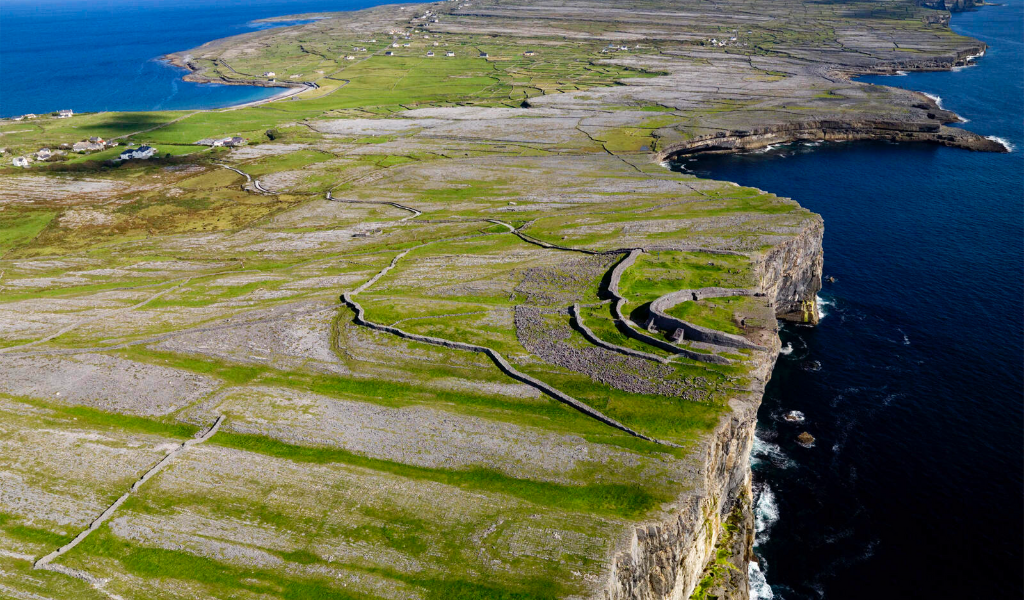
Venture to the captivating Aran Islands by boat from Doolin in County Clare to Inishmore, Inishmaan, or Inisheer. Doolin is the shortest crossing point. These islands boast a unique blend of high towers and ancient stone forts. Visit Dún Aonghasa on Inishmore, a prehistoric fort perched on the edge of a dramatic cliff, offering awe-inspiring views of the Atlantic Ocean. Explore Dún Dúchathair on Inishmore, a smaller stone fort nestled amidst breathtaking scenery. Don’t miss O’Brien’s Castle on Inisheer, a picturesque ruin overlooking the island’s rugged coastline. The Aran Islands present a fascinating mix of history, culture, and stunning landscapes.
Visit O’Brien’s Tower – atop the Cliffs of Moher
A beacon of high towers and powers
O’Brien’s Tower, the Cliffs of Moher, North Clare
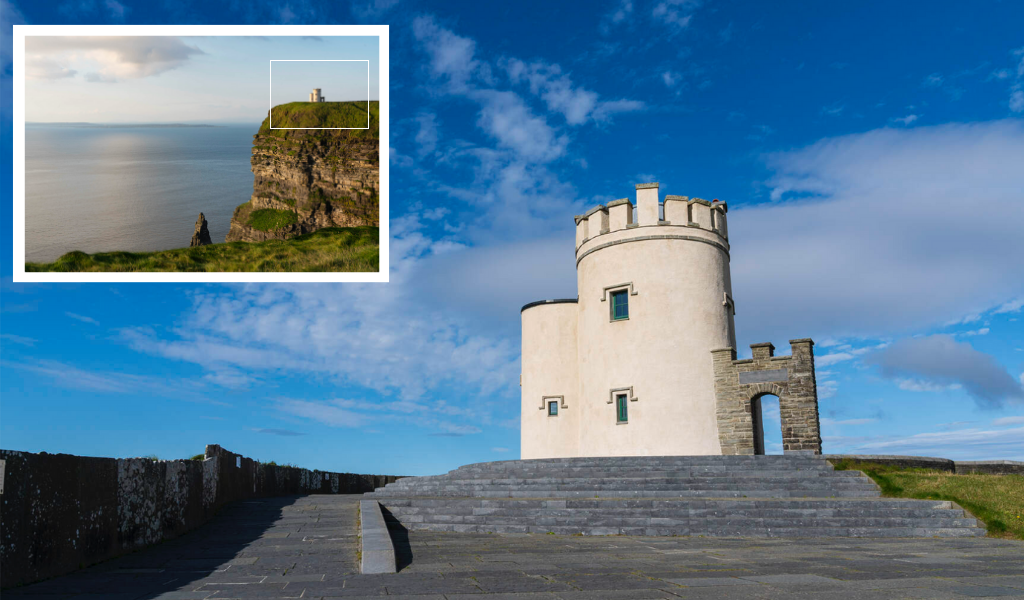
O’Brien’s Tower, perched atop the majestic Cliffs of Moher, has enthralled visitors since the 19th century. Built in 1835 by Sir Cornelius O’Brien, a local landlord and Member of Parliament, the tower served as an observation point for English tourists. The tower now offers breathtaking views of the Aran Islands and Twelve Bens of Connemara across Galway Bay. O’Brien, descendant of Ireland’s High King Brian Boru, invested in making the cliffs accessible and appealing. The tower remains an iconic landmark, showcasing the timeless beauty that has fascinated generations. Today, O’Brien’s Tower stands as a symbol of the captivating allure and enduring powers of the Cliffs of Moher.

